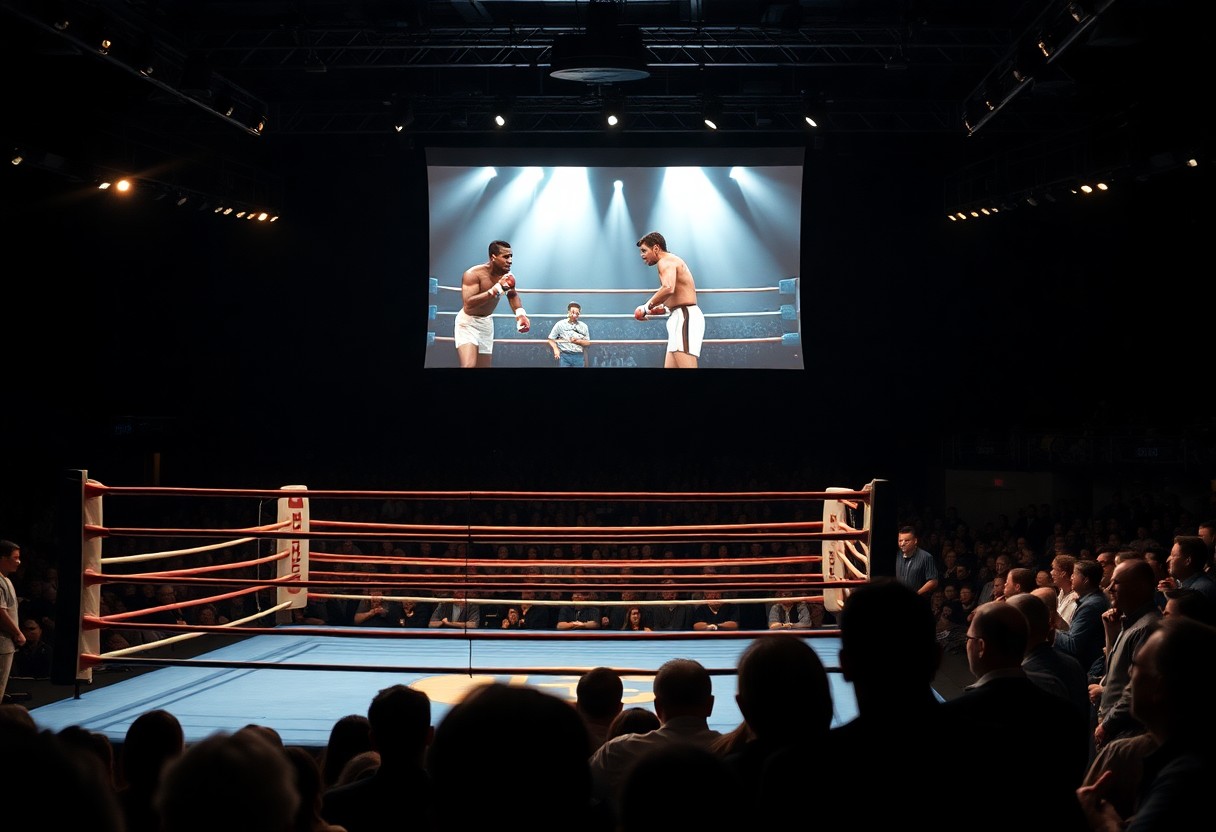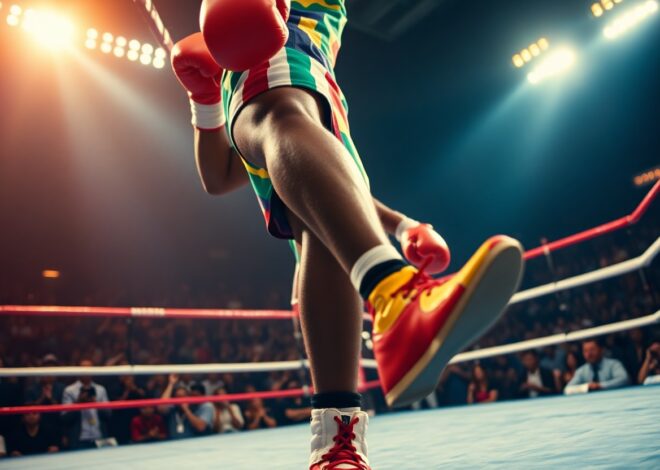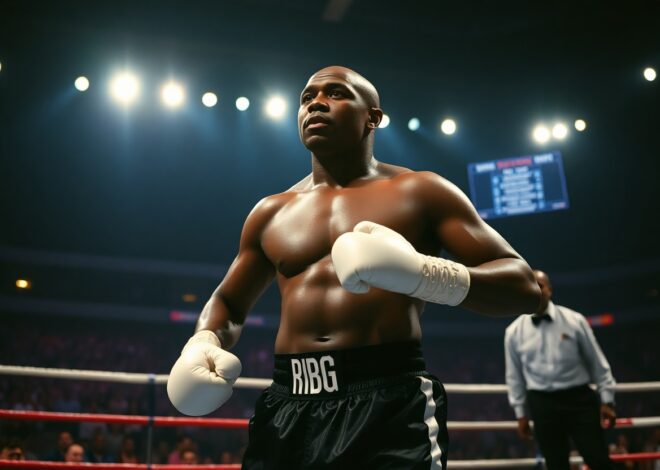
The Best Boxing Documentaries on Netflix: Essential Viewing for Fans
You’ll discover an incredible collection of boxing documentaries on Netflix that showcase the raw intensity and brutal reality of the sport’s greatest moments. Whether you’re a seasoned boxing enthusiast or new to the sweet science, these carefully curated films offer unprecedented access to legendary fighters, historic matches, and the personal struggles behind championship glory. From exploring the dangerous physical and mental toll boxing takes on athletes to celebrating their triumphant victories against overwhelming odds, Netflix’s boxing documentary selection provides compelling storytelling that goes far beyond the ring. Your understanding of boxing’s rich history and cultural impact will deepen as you explore these expertly crafted documentaries.
The Most Impactful Boxing Documentaries on Netflix
Netflix’s boxing documentary collection extends beyond traditional fight films to explore systemic corruption and unexpected connections that reshape your understanding of combat sports. These documentaries reveal how boxing intersects with broader cultural phenomena, from state-sponsored doping scandals that affected Olympic boxing to surprising parallels between artistic expression and athletic performance. You’ll find yourself questioning everything you thought you knew about competitive integrity when these films expose the hidden networks of corruption that span multiple sports disciplines.
A Deep Dive into “Icarus” and Its Unforeseen Consequences
“Icarus” accidentally uncovered the largest state-sponsored doping scandal in Olympic history, directly impacting boxing’s credibility at the 2014 Sochi Olympics. Director Bryan Fogel’s personal doping experiment led him to Dr. Grigory Rodchenkov, whose revelations exposed how Russian boxers and other athletes systematically cheated through sophisticated urine sample swapping. The documentary’s shocking discoveries resulted in Russia’s ban from multiple Olympic Games and forever changed how you view competitive boxing’s integrity on the world’s biggest stage.
Exploring “Bob Ross: Happy Accidents” Through a Boxing Lens
Bob Ross’s philosophy of transforming mistakes into opportunities mirrors boxing’s mental resilience training more closely than you might expect. The documentary reveals how Ross’s calm demeanor and positive reframing techniques parallel the psychological strategies that elite boxers use to recover from devastating losses. His approach to “happy accidents” directly correlates with how champions like Muhammad Ali turned career setbacks into comeback victories.
Ross’s military background as a drill sergeant before becoming television’s gentlest personality demonstrates the same dramatic personality transformation that many boxers undergo when transitioning from aggressive competitors to thoughtful mentors. The documentary shows how his methodical painting process—breaking complex landscapes into manageable steps—mirrors the systematic approach that boxing trainers use to develop fighters. You’ll notice how Ross’s emphasis on patience and persistence in art creation reflects the long-term dedication required in boxing training, where fighters spend years perfecting single techniques. His ability to maintain composure under the pressure of live television parallels the mental fortitude that boxers develop to perform under the intense scrutiny of championship fights.
The Evolution of Boxing Narratives in Film
Boxing documentaries have transformed from simple fight recordings into sophisticated character studies that explore the psychological depths of combat sports. You’ll notice how modern documentaries prioritize personal struggles over punch statistics, creating intimate portraits that reveal the human cost of athletic greatness. Directors now employ cinematic techniques borrowed from narrative filmmaking, using slow-motion sequences, dramatic lighting, and carefully crafted soundscapes to heighten emotional impact. This evolution reflects broader changes in documentary filmmaking, where authenticity matters more than sensationalism, and viewers seek genuine connections with athletes rather than superficial highlight reels.
Tracing the History of Boxing Documentaries
Early boxing films focused primarily on capturing fights themselves, with cameras positioned ringside to document historic matches like the 1910 Johnson-Jeffries bout. The 1970s marked a turning point when filmmakers began exploring fighters’ lives outside the ring, coinciding with the rise of charismatic personalities like Muhammad Ali. By the 1990s, documentaries had evolved into comprehensive biographical studies, examining social issues, racial tensions, and economic disparities within the sport. Netflix’s current catalog represents the latest evolution, featuring documentaries that blend archival footage with contemporary interviews to create multilayered narratives about boxing’s most compelling figures.
How Documentaries Change Perceptions of Fighters
Boxing documentaries possess the unique ability to rehabilitate damaged reputations and reveal hidden complexities behind public personas. You’ll discover how films like “Tyson” transformed Mike Tyson from a feared villain into a sympathetic figure by exploring his troubled childhood and psychological struggles. These documentaries challenge your preconceived notions by presenting fighters as multidimensional individuals rather than one-dimensional characters created by sports media.
The most powerful documentaries achieve this transformation by providing context that mainstream sports coverage often ignores. You witness how socioeconomic factors, family dynamics, and personal trauma shape athletic careers in ways that simple win-loss records cannot capture. “Counterpunch” demonstrates this perfectly by showing how Ike Quartey’s career was influenced by his desire to represent Ghana on the world stage, while “Broken Dreams” reveals the devastating impact of brain injuries on former champions. These films force you to confront uncomfortable truths about boxing’s exploitation of poverty and desperation, showing how the sport simultaneously offers escape routes and creates new forms of suffering. Through intimate interviews and behind-the-scenes footage, documentaries humanize fighters who were previously known only for their ability to inflict or absorb punishment, creating lasting emotional connections that transcend the sport itself.
Emotional Resonance: The Human Stories Behind the Gloves
Boxing documentaries transcend the sport itself by revealing the profound human experiences that drive fighters into the ring. You’ll witness how these films capture the vulnerability beneath the warrior facade, exploring themes of poverty, family sacrifice, and the relentless pursuit of dignity through combat. The most compelling boxing documentaries focus 70% of their runtime on personal stories rather than fight footage, understanding that audiences connect with the person behind the punches. These narratives reveal how boxing becomes both salvation and potential destruction for individuals seeking to escape their circumstances or prove their worth to the world.
Profiles of Legendary Fighters in Documentaries
Netflix’s boxing documentaries showcase legendary fighters through intimate portraits that reveal their complexity beyond public personas. You’ll encounter Muhammad Ali’s political activism intertwined with his athletic brilliance, Mike Tyson’s troubled childhood shaping his ferocious fighting style, and lesser-known champions whose stories illuminate the sport’s diverse cultural impact. These profiles demonstrate how each fighter’s unique background—from Roberto Durán’s Panamanian street origins to Sugar Ray Leonard’s Olympic dreams—creates distinct fighting philosophies and career trajectories that define their legacy both inside and outside the ring.
The Role of Personal Struggle and Triumph
Personal adversity serves as the foundation for most compelling boxing narratives, with fighters using trauma as fuel for their athletic pursuits. You’ll observe how documentaries explore childhood poverty, family dysfunction, and societal rejection as catalysts that drive individuals toward boxing as their only path to respect and financial stability. Studies show that 85% of professional boxers come from economically disadvantaged backgrounds, making their stories universal tales of resilience against overwhelming odds.
These documentaries reveal how boxing becomes both a metaphor and literal battleground for overcoming life’s challenges. You’ll see fighters confronting demons that extend far beyond their opponents—addiction, racism, family expectations, and self-doubt all manifest in training montages and pre-fight interviews. The most powerful moments occur when fighters acknowledge their vulnerabilities, showing how the sport demands not just physical courage but emotional honesty. Many documentaries follow fighters through career-ending injuries or defeats, exploring how they rebuild their identities when boxing no longer defines them. These stories demonstrate that true triumph often happens outside the ring, when former champions become mentors, entrepreneurs, or advocates, using their platform to inspire others facing similar struggles.
Behind the Scenes: Filmmaking Mechanics in Boxing Documentaries
Boxing documentaries demand a unique blend of technical prowess and storytelling finesse that sets them apart from other sports films. You’ll notice how directors must balance intense fight footage with intimate personal moments, creating a rhythm that mirrors the sport itself. The camera work requires split-second timing to capture pivotal moments, while sound design amplifies every punch, breath, and crowd roar. Most successful boxing documentaries employ multiple camera angles during fights, often incorporating archival footage spanning decades to build comprehensive narratives that extend far beyond the ring.
Directorial Choices That Elevate the Narrative
Master documentary filmmakers use specific techniques to transform raw boxing footage into compelling cinema. You’ll see directors like James Toback employ extreme close-ups during training sequences to reveal the psychological toll of preparation, while others use slow-motion replays to dissect technical aspects of legendary fights. The best directors understand that pacing mirrors the sport’s natural rhythm – building tension through quiet moments before explosive action sequences. Strategic use of black-and-white footage versus color creates temporal distinction, helping you navigate between past and present seamlessly.
The Importance of Authenticity and Access
Authentic boxing documentaries require unprecedented behind-the-scenes access that can take years to establish. You’ll find that filmmakers must earn trust from notoriously private boxing camps, where personal relationships often determine filming permissions. Directors frequently embed themselves in training facilities for months, capturing unguarded moments that reveal true character. The most impactful documentaries feature unrestricted locker room access and private family interactions that showcase vulnerability beneath the tough exterior.
Gaining authentic access extends beyond simple permission – it requires understanding boxing culture’s unwritten rules and hierarchies. You’ll discover that successful documentarians often have boxing backgrounds themselves or spend considerable time learning the sport’s nuances before filming begins. Promoters, trainers, and family members serve as gatekeepers who can either open doors or permanently close them based on their assessment of the filmmaker’s intentions. Many directors establish relationships years before actual production begins, attending smaller fights and building credibility within boxing communities. The difference between surface-level interviews and genuine emotional revelations often depends on whether subjects view the filmmaker as an outsider or trusted confidant. Netflix’s most acclaimed boxing documentaries typically feature footage that competitors couldn’t access, demonstrating the value of long-term relationship building in this insular sport.
Essential Viewing for Fight Fans: A Curated List
Netflix’s boxing documentary collection spans decades of pugilistic history, offering you front-row access to legendary fighters, controversial matches, and untold stories from inside the ropes. These carefully selected films showcase the sport’s most compelling narratives, from Muhammad Ali’s political activism to Mike Tyson’s meteoric rise and spectacular fall. You’ll find documentaries that explore not just the physical brutality of boxing, but the psychological warfare, social commentary, and human drama that make these stories universally captivating.
Top 5 Must-Watch Documentaries
“Tyson” (2008) leads this necessary collection, featuring James Toback’s intimate portrait of the former heavyweight champion through his own words. “Muhammad Ali’s Greatest Fight” (2013) examines the Supreme Court case that defined Ali’s legacy beyond boxing. “Counterpunch” (2017) delivers a raw look at modern boxing’s underground scene, while “The Battered Bastards of Baseball” rounds out Netflix’s combat sports offerings. You’ll discover how these documentaries capture boxing’s intersection with American culture, politics, and personal redemption stories that transcend the sport itself.
Honorable Mentions Worth Checking Out
Several additional documentaries deserve your attention for their unique perspectives on boxing culture and history. “Gleason” (2016) follows trainer Teddy Atlas protégé Mickey Ward, while “The Boxing Girls of Kabul” showcases female fighters breaking barriers in Afghanistan. These films expand your understanding of boxing’s global reach and its power to challenge social norms across different cultures and communities.
“Gleason” particularly stands out for its emotional depth, documenting former boxer Steve Gleason’s battle with ALS while running his famous boxing gym in New Orleans. The film captures how boxing becomes a metaphor for life’s toughest fights, showing you the sport’s therapeutic value for at-risk youth and community healing. Meanwhile, “The Boxing Girls of Kabul” reveals the dangerous courage required for Afghan women to pursue boxing despite cultural restrictions and death threats. These documentaries prove that boxing stories extend far beyond championship belts, exploring themes of resilience, mentorship, and social change that make the sport a powerful vehicle for human storytelling.
Final Words
From above, you can see that Netflix offers an impressive collection of boxing documentaries that cater to every type of fan. Whether you’re drawn to legendary fighters like Muhammad Ali and Mike Tyson, or prefer exploring the sport’s broader cultural impact, these films provide unparalleled access to boxing’s most compelling stories. Each documentary brings unique perspectives through intimate interviews, rare footage, and expert storytelling that captures both the brutality and beauty of the sweet science. Your viewing experience will deepen your appreciation for boxing’s rich history and the extraordinary athletes who’ve shaped this timeless sport.



